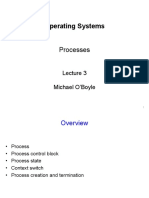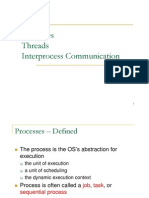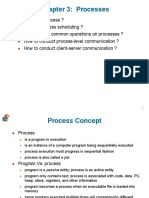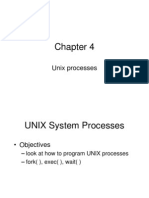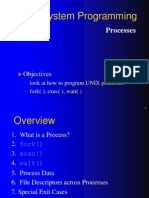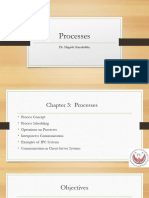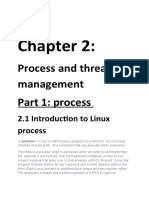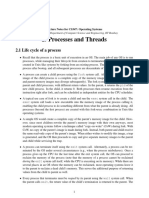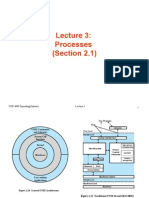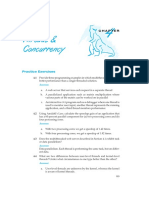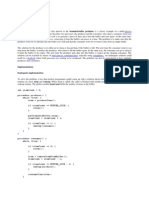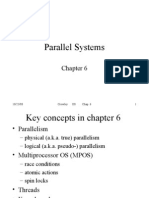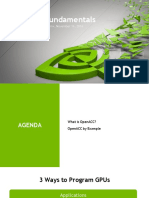0% found this document useful (0 votes)
16 views84 pagesOperating Systems - Processes
The document provides an overview of processes in operating systems, detailing the distinction between programs and processes, the structure of process address space, and the management of processes through process control blocks (PCBs). It explains the concepts of virtual memory, process states, process creation via cloning, and the implications of process termination, including zombies and orphans. Additionally, it highlights the advantages of virtual addressing and the role of shared libraries in process execution.
Uploaded by
106123122Copyright
© © All Rights Reserved
We take content rights seriously. If you suspect this is your content, claim it here.
Available Formats
Download as PDF, TXT or read online on Scribd
0% found this document useful (0 votes)
16 views84 pagesOperating Systems - Processes
The document provides an overview of processes in operating systems, detailing the distinction between programs and processes, the structure of process address space, and the management of processes through process control blocks (PCBs). It explains the concepts of virtual memory, process states, process creation via cloning, and the implications of process termination, including zombies and orphans. Additionally, it highlights the advantages of virtual addressing and the role of shared libraries in process execution.
Uploaded by
106123122Copyright
© © All Rights Reserved
We take content rights seriously. If you suspect this is your content, claim it here.
Available Formats
Download as PDF, TXT or read online on Scribd
/ 84


